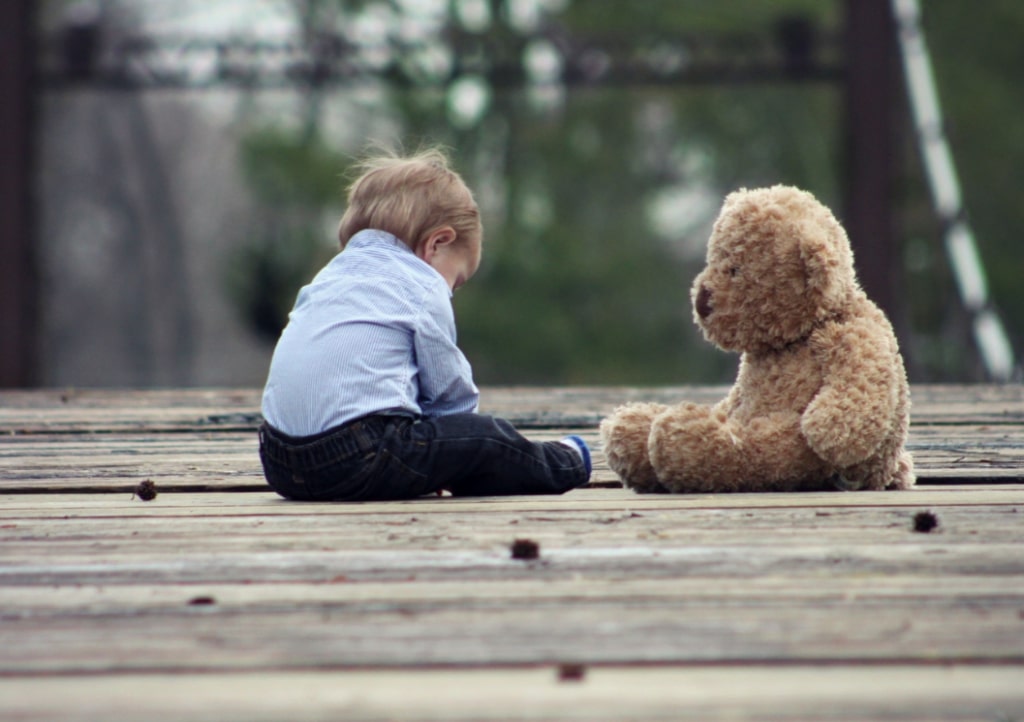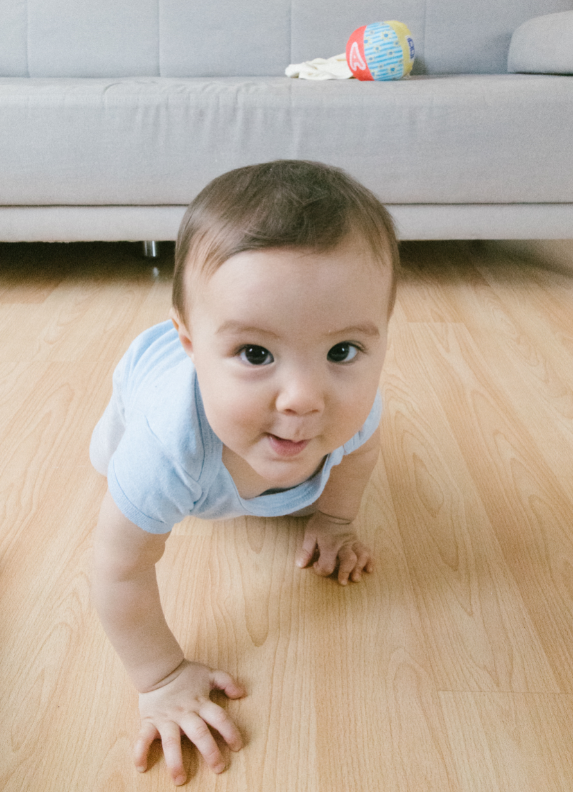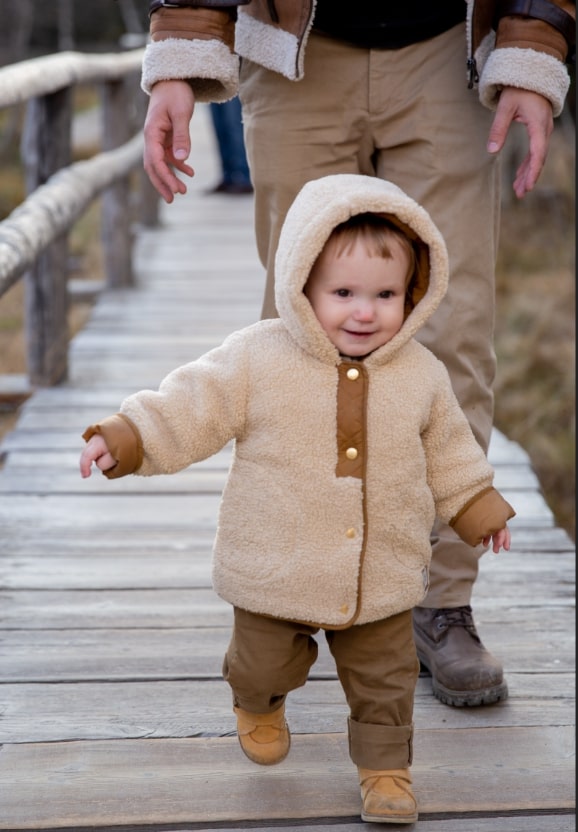For every parent, watching your child take his/her first steps is a thing of joy. In fact, walking is one of the most amazing and memorable developmental milestones for every child.
Sometimes, it may seem like this milestone was crossed overnight, especially when your little one has already started climbing chairs and tables. However, walking results from a series of physical, mental, and muscular changes.
In this article, you’d discover all you need to know about your baby’s ability to walk; the timeline, stages, and how you can help your baby achieve this milestone.
Read on to learn more!
Table of Contents:
When Do Children Actually Start Walking?
Some children begin to walk before the 1st year of life, around the time they start their stage 4 diet. In other cases, the first steps may come after the 1st year, usually around the 14th or 15th month.

Although unassisted walking starts around the 12th to 15th month of life, it is important to note that there are other processes that lead up to your baby walking.
These pre-walking stages include:
- Pushing up
- Rolling
- Sitting up
- Pulling up
- Crawling
- Assisted walking
Even if your baby has crossed all of these pre-walking stages, it is very important to contact your pediatrician if your child hasn’t started walking by the 18th month.
The Stages Before Walking
As we mentioned earlier, there are certain boxes that must be ticked before your child starts to walk without help.
These stages include:
1. Pushing Up
As a newborn, your baby would have little to no neck or head control. However, the 3rd or 4th month of life comes with the ability to hold his/her neck up and push up while lying on their belly.
The pushing up stage is really crucial in the muscular development necessary for walking.
2. Rolling
Again, this comes in stages. At first, your child is probably going to roll from front to back. Eventually, he/she would discover that it is also possible to roll from back to front. Most times, the rolling stage happens between the 3rd and 6th months of life.
3. Sitting up
At this point, your baby’s back muscles are strong enough to support his/her upper body weight. As a result, you’d notice that your child can now sit up with little or no assistance. In most cases, the sitting up stage happens within the 4th and 9th months.

4. Pulling up
Now, this is often a result of crossing an earlier pre-walking stage.
Here’s the fact: Babies are very curious. Once your little one gets the hang of sitting up, he/she would definitely want to get a taste of more. In this case, more means trying to get on his/her feet. This usually happens between the 8th and 11th months of life.
At this point, you’d begin to notice that your baby can pull him/herself upwards to stand while leaning on a chair or table.
5. Crawling
For most parents, the crawling stage comes with a lot of excitement (and work). Your baby may start to crawl at about the 6th month. Read this to learn more about crawling and how to help your baby crawl faster.

6. Assisted Walking
At this point, your baby would have realized that it is possible to move around with some assistance. In fact, this new activity may be so exciting to him/her that they’d never want to stop holding your hand.
To help your little one move through this stage smoothly, it is important to make sure that he/she wears the right baby shoes, and your household furniture is safe and stable to lean on.
For most babies, the assisted walking stage occurs between the 6th and 13th months of life.
Signs to Watch Out For
As your baby crosses each of these pre-walking stages, there are several tell-tale signs that show how ready your little one is to take his/her first step.
To help you out, here are two of the most obvious ready-to-walk signs your child would demonstrate in this period:
- The ability to stand upright with minimal assistance
- Better body balance and coordination
How Can I Help My Baby Walk Faster?
As it is with every other developmental milestone, your baby needs as much help as he/she can get. Thankfully, there are a lot of ways to help your little one walk without assistance.

You can do this by:
- Creating an Exciting Trail: Yes, the same trick you used to help your baby start crawling still works. All you need to do is just create a path that places your child’s favorite items slightly out of his/her reach and watch your little one try out various methods (including walking) to get to his/her prized possession.
- Provide Support: As we mentioned earlier, sitting and pulling up comes before walking. You can help your child walk faster by providing safe and stable surfaces he/she can lean on while pulling up.
- Hold Hands: As you play around the house, you can help your baby learn to walk faster by holding his/her hand while taking those cute little baby-sized steps.
- Buy Comfy Shoes: In this period, while your baby learns to walk, his/her footies are super important. You need to ensure that the baby shoes you select are safe, padded, and comfortable. See our great tips on how to get the right shoe size for your baby here.
- Be Patient: Babies learn in stages. In fact, the timeline of each stage is unique to each child. As you watch your baby learn how to walk, it is normal to experience stops and starts. All you need to do is wait, observe, and provide all the love, care, and assitstance that your child needs to thrive.
When to Speak with Your Pediatrician
As we mentioned earlier, patience is a key ingredient in this process. The truth is, every child develops at his/her own unique pace.
However, it is important to keep an eye out for any potential warning signs. Please contact your pediatrician if your baby hasn’t started crawling by the 10th month or has made no attempt to move in the 1st year of life.
This is really important because it may be a symptom of a more serious medical condition.
Conclusion
Don’t get bothered if your baby doesn’t transit smoothly through all the stages mentioned in this article. In fact, minor hurdles like trips or falls are absolutely normal as your child learns to walk. Sometimes, your baby may even take his/her first steps then switch right back to crawling!
This is not a cause for concern.
All you have to do is be patient, provide support and wait for him/her to gain the confidence and balance necessary for walking.
Enjoy the journey!
References
Adolph KE, Hoch JE, Cole WG. Development (of Walking): 15 Suggestions. Trends Cogn Sci. 2018 Aug;22(8):699-711. doi: 10.1016/j.tics.2018.05.010. Epub 2018 Jul 4. PMID: 30032744; PMCID: PMC6145857.
Iwata H. A statistical analysis of the factors that determine the age at which babies start walking. J Hum Ergol (Tokyo). 1991 Jun;20(1):27-40. PMID: 1820378.

